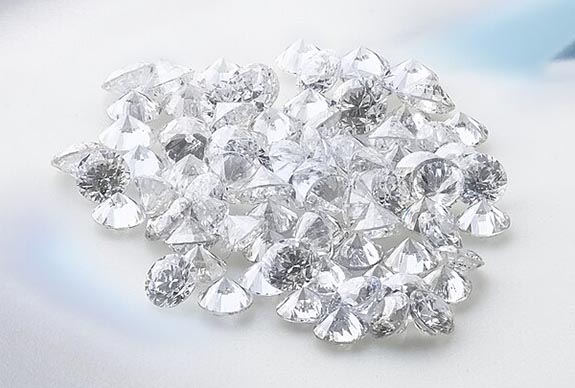June 20th, 2024
In the time it takes to make a hard-boiled egg, South Korean researchers are creating synthetic micro-diamonds from a brew of graphene, silicon, gallium, iron and nickel.

For decades, scientists have grown synthetic diamonds by replicating in a lab the high temperatures and intense pressure that transform carbon into diamond deep within the Earth's mantle. The natural process is believed to take place over a billion years at a temperature of 2,700 degrees Fahrenheit (1,500 degrees Celsius) and 50,000 atmospheres of pressure.
A breakthrough technique, developed by physical chemist Rodney Ruoff and his team at the Institute for Basic Science in South Korea, turns that diamond-growing strategy on its head.
With the new lab process, diamond formation starts within 10 to 15 minutes. The process takes place in a small chamber at normal atmospheric pressure and requires no "starter" gem.
“For over a decade, I’ve been thinking of new ways to grow diamonds, believing it could be done in unexpected ways compared to conventional thinking," Ruoff told livescience.com. "In about a year or two, the world might have a clearer picture of the potential commercial impact.”
So far, the diamonds produced by Ruoff and his team are thousands of times smaller than an engagement diamond. Still, these tiny diamonds could be used for industrial purposes and further breakthroughs could eventually impact the jewelry industry.
Ruoff and his team passed super-hot carbon-rich methane gas through the special chamber, where it met up with a crucible containing a mixture of gallium, nickel, iron and a touch of silicon.
The scientists explained that gallium is a metal that catalyzes the formation of graphene from methane. Graphene, like diamond, is made of pure carbon atoms. Graphene's chemical structure is flat and straight in a hexagonal lattice, while a diamond's structure is in the 3D shape of a tetrahedron.
In less than 15 minutes, a film of micro-diamonds started forming on the crucible’s base. The researchers believe a temperature drop within the chamber concentrates carbon, causing it to crystallize into diamonds.
“This pioneering breakthrough was the result of human ingenuity, unremitting efforts, and the concerted cooperation of many collaborators,” Ruoff said in a statement.
The breakthrough process was detailed in the scientific journal Nature.
Credit: Image by Igor Stratichuk, CC BY-SA 4.0, via Wikimedia Commons.

For decades, scientists have grown synthetic diamonds by replicating in a lab the high temperatures and intense pressure that transform carbon into diamond deep within the Earth's mantle. The natural process is believed to take place over a billion years at a temperature of 2,700 degrees Fahrenheit (1,500 degrees Celsius) and 50,000 atmospheres of pressure.
A breakthrough technique, developed by physical chemist Rodney Ruoff and his team at the Institute for Basic Science in South Korea, turns that diamond-growing strategy on its head.
With the new lab process, diamond formation starts within 10 to 15 minutes. The process takes place in a small chamber at normal atmospheric pressure and requires no "starter" gem.
“For over a decade, I’ve been thinking of new ways to grow diamonds, believing it could be done in unexpected ways compared to conventional thinking," Ruoff told livescience.com. "In about a year or two, the world might have a clearer picture of the potential commercial impact.”
So far, the diamonds produced by Ruoff and his team are thousands of times smaller than an engagement diamond. Still, these tiny diamonds could be used for industrial purposes and further breakthroughs could eventually impact the jewelry industry.
Ruoff and his team passed super-hot carbon-rich methane gas through the special chamber, where it met up with a crucible containing a mixture of gallium, nickel, iron and a touch of silicon.
The scientists explained that gallium is a metal that catalyzes the formation of graphene from methane. Graphene, like diamond, is made of pure carbon atoms. Graphene's chemical structure is flat and straight in a hexagonal lattice, while a diamond's structure is in the 3D shape of a tetrahedron.
In less than 15 minutes, a film of micro-diamonds started forming on the crucible’s base. The researchers believe a temperature drop within the chamber concentrates carbon, causing it to crystallize into diamonds.
“This pioneering breakthrough was the result of human ingenuity, unremitting efforts, and the concerted cooperation of many collaborators,” Ruoff said in a statement.
The breakthrough process was detailed in the scientific journal Nature.
Credit: Image by Igor Stratichuk, CC BY-SA 4.0, via Wikimedia Commons.


